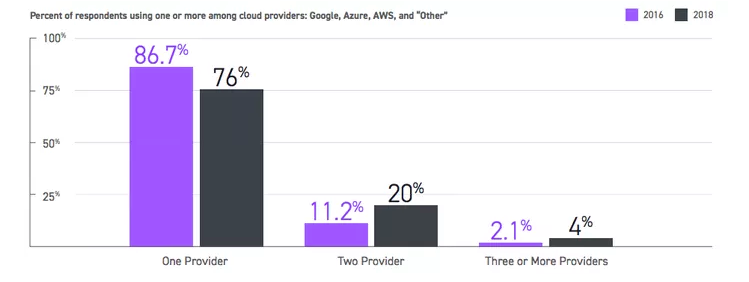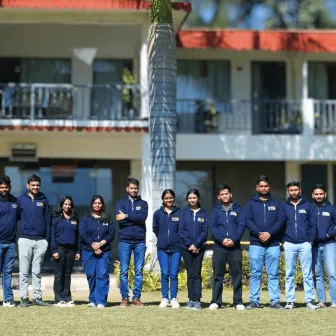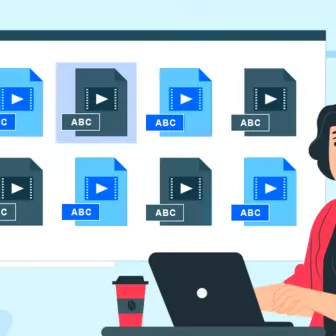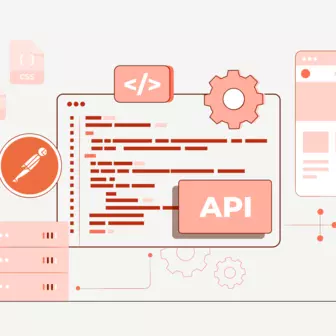Serverless architecture is the inevitable future for IT leads. Major players in the technology sector are moving towards cloud platforms. Allowing the developers to skip writing for a particular OS platform or hardware infrastructure, the cloud vendor can provision and manage major computing resources.
But there’s a catch: it comes with the risk called ‘vendor lock-in’. It is becoming a huge concern among businesses as it becomes difficult to port to another vendor’s platform without involving considerable effort and cost.
But is it a real issue that you need to be concerned about or is it just a narrative created by competing vendors? Let’s find out!

How does Serverless vendor lock-in occur?
When a serverless computing service is brought it, the company gets locked on a particular vendor for providing technology implementation and finds it taxing to easily move out in the future. Major barriers arrive due to a lack of standardization in adopting cloud computing. With almost non-existent analysis or study, it is difficult to weigh in the complexities of the vendor lock-in issues. This leads to unaware customers falling in the trap more often. To battle this, organizations should keep a tab on the potential risks of getting locked into a vendor before investing in any serverless API.
How much should you worry?
Observant experts have a different take on this lock-in situation. According to them, the problem isn’t really in the context of serverless computing as of now. They are skeptical of giants like Amazon for fueling forge problems in order to sabotage new entrants. Secondly, the relatively new and fragmented technology, serverless computing has immature clientele who are relying too much on it. Instead, organizations should commit to a platform only after thorough research and seeking offers across providers. Instead of going for multiple clouds, you can escape the lock-in by finding an all-rounder.

Two Dimensional Solutions
If you still managed to get stuck at the vendor lock-in situation, there are two kinds of solution to mitigate the fears:
Opportunity Gain
When your organization decides to adopt serverless computing, it serves as a chance to maximize your ‘opportunity gain’.
Among various options out there like, serverless framework, apex, and claudia.js, examining extensively about the best fit for you is the key. Do not follow the herd for what fit others might not work the same way for you.
Also, your evaluation of a particular cloud platform might not hold true in the near future. With the advent of fast-paced technology, it is too soon to make any kind of judgments. Instead, put this to your advantage and invest your toll by endorsing a faster time-to-market approach, i.e., do not try to reinvent the tools and become cloud-native.
Minimize Cost
Even if you decide to switch to other serverless vendors, it is possible to minimize the migration cost. When considering the potential stakes of lock-in these three areas can save you from the roof touching damages:
Choose the programming language wisely
The smart way out of the dilemma is to choose a programming language that is supported by multiple vendors. This means, when you are migrating to a platform that shares the same language, it saves you from incurring massive cost and endeavors. For instance, languages like NodeJS and Python are supported only by the Google Cloud Function. Look out for such limitations in advance and choose a language wisely.
Architecture Pattern of the Application
The next big challenge after sorting the chosen language is to manage the ecosystem of the cloud.
A good architectural pattern serves as the base that makes for migrations of Lambdas easier. If the base code remains the same while migration, the values come down automatically. This means the only change will occur while writing and plugging in new adapters. Organizations tend to ignore the importance of architectural pattern as they miss out on the fact that the core is isolated from the AWS ecosystem. Which makes it independent and reduces the incurring value too.
Standardize the Technology
Similarly, HTTP web server can be supported by almost all vendors. Or you can install your own in the worse case scenarios. Since this makes the SPA stable, the quotation for migrations comes further down.
The frontend code too gets abstracted by HTTP during the workings of backend. A common use case in the notice is the translation of HTTP events to Lambdas using the AWS API Gateway. Most vendors support such processes and a sweeping cost is brought to a minimum.
Conclusion
The vendor lock-in fears are more about the extravagant expenses that can be easily avoided by following industry practices. It is no more a dream to adopt serverless with low migration cost. Putting these practices in use will keep you safeguard from getting hoaxed by the vendors at any point of migration.
Do you have any more suggestions to add? Share your views on our social networks: Twitter, Facebook and LinkedIn. Or contact us at [email protected].
Subscribe
Related Blogs
Trek n Tech Annual Retreat 2025: A 7-Day Workcation of OSL

OSL family came together for the Trek n Tech Annual Retreat 2025, a 7-day workcation set amidst the serene beauty of…
Exploring Drupal's Single Directory Components: A Game-Changer for Developers

Web development thrives on efficiency and organisation, and Drupal, our favourite CMS, is here to amp that up with its…
7 Quick Steps to Create API Documentation Using Postman

If you work with API , you are likely already familiar with Postman, the beloved REST Client trusted by countless…




